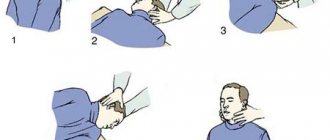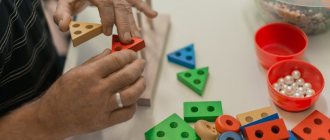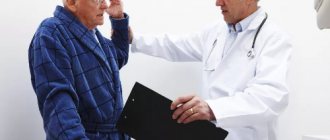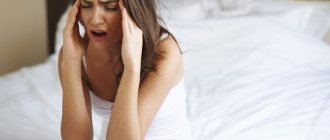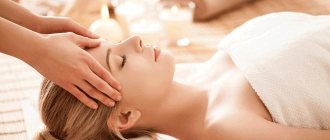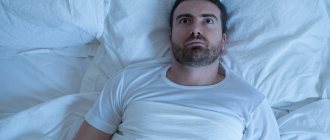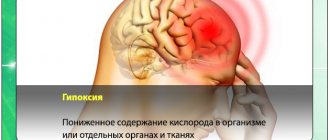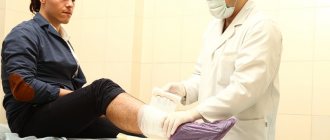Exercises for dizziness I came to the Center for my next rehabilitation with this question in September 2021.
That is, for the fifth rehabilitation at the Neurorehabilitation Center of Krasnoyarsk.
To be honest, after the operation and the stroke, when my mother took me two months later, I noticed that I often felt sick.
It wasn’t just that I felt bad, it all happened while moving, for example, in a car.
I realized that I was not just sick of the fact that I was traveling in a vehicle, but of the way the driver was driving the vehicle.
Sometimes I didn’t pay attention to the ride, and sometimes I got out and felt bad, that is, I had nausea and dizziness.
In other words, I periodically felt dizzy when traveling in public transport.
I didn’t feel bad at all, but it was not pleasant.
It’s just that before, I didn’t experience such inconvenience at all.
Secondly, I also noticed that standing, for example, on the road, I was very swaying, and it seemed like I was about to fall.
I tried to stand straight while waiting for a taxi on the road.
As soon as I stood half-bent over, the dizziness went away, and the feeling that I was going to fall went away.
That’s why I wanted to consult doctors about what to do or what exercises to use for dizziness.
IP – LYING ON YOUR BACK
- Arms extended behind the head, stretching in four counts. Repeat 6-8 times.
- Arms are extended behind the head, without lifting your hands from the floor, raise your head and look at your outstretched socks. Repeat 4-6 times
- “Bicycle” - put your hands under your head, legs bent, 3 sets for a count of 10.
- Legs bent at the knees, straighten your legs up, spread them apart, then connect them and lower them down. Repeat 6-8 times.
- Diaphragmatic breathing: inhale - inflate the stomach, exhale - draw in the stomach, 6-8 times.
Rules for performing vestibular gymnastics
Vestibular gymnastics should be done daily 2-3 times a day. During classes, breathing is arbitrary and free. Each exercise must be repeated 5-7 times, gradually increasing the number of repetitions (up to 10-15 times). The duration of the lesson should be up to 30 minutes, after which rest is necessary. If you feel faint during exercise, stop temporarily and take a Dramamine tablet.
To the complex of vestibular gymnastics, add walks in the fresh air daily for up to 1 hour (preferably in a park area).
IP – SITTING ON A CHAIR OR STOOL
- Arms are lowered along the body, tilt your head forward - slowly and touch your chin to your chest, and just as slowly come back. 6-8 times
- The arms are lowered along the body - we bend the arms at the elbows, move the elbows back - inhale, return to the starting position - exhale. 4-6 repetitions.
- Hands on knees, palms between legs. For 2 counts, tilt the head and torso to the left, return to the starting point, for 3-4 counts, tilt the head and torso to the right, return to the starting point. 4-6 repetitions.
- Rest – “coachman” pose: head tilted forward, hands resting loosely on knees, breathing calmly. 1-2 minutes.
Diseases of the vestibular system and dizziness
There are a number of diseases that lead to disorders of the vestibular apparatus:
- Vertebrobasilar syndrome.
- Meniere's syndrome.
- Vestibular neuronitis.
- Thrombosis of the auditory artery.
- Chronic bilateral vestibulopathy.
Vestibular vertigo can be caused by damage to the vestibular nucleus of the brain stem, the vestibular centers of the brain and vestibular connections may be affected. If the vestibular analyzer is affected, the patient will experience certain symptoms:
- Noise in ears.
- Hearing loss.
- Constant dizziness.
When the central parts of the vestibular apparatus (cerebellum, brain stem) are affected, benign paroxysmal positional vertigo, vestibular neuronitis or Meniere's disease are most often diagnosed.
IP – LYING ON YOUR Stomach
- Stretch your arms forward without lifting your chin from the floor, raise your legs, spread them, connect them, then lower them. Repeat 4-6 times.
- “Swimming” - raise your upper body and perform a movement with your arms as if swimming, without touching the floor with your hands. 4-6 repetitions of 4 movements on each hand.
- Hands in a “lock” behind your head, bend over 4-6 times.
- “Wings” - raise your arms and torso above the floor, spread your arms to the sides and swing them up and down 6 times
- Rest.
Vestibular vertigo: symptoms and treatment in older people
Dizziness (vertigo) is manifested by the illusion of rapid rotation of objects around the patient. It may be accompanied by vomiting, nystagmus, nausea, and ringing in the ears. When vestibular vertigo develops in older people, the causes can be varied: lack of blood supply to the brain (cerebral ischemia), multiple sclerosis, head injuries, some types of brain tumors, tumors of the auditory nerve, hormonal imbalance, atherosclerosis, and other disorders. Treatment of vestibular vertigo (vertigo) in older people begins with finding the cause of the dizziness and treating the underlying disease. Vestibular gymnastics for dizziness in older people improves well-being, has a beneficial effect on the heart, musculoskeletal system, and nervous system. Treatment of vestibular vertigo is carried out with the help of drug therapy, physiotherapy, physical therapy, and reflexology.
IP – SITTING ON A CHAIR OR STOOL
- Keep your head and shoulders straight. Slowly turn your head as far to the right as possible (5 times). Move to the left the same number of times.
- Lower your chin to your neck. Turn your head first 5 times to the right and then 5 times to the left.
- Throw your head back. Try to touch your right ear to your right shoulder (5 times). Perform the same movement, trying to touch your left shoulder with your left ear (5 times).
***The exercise therapy complex is designed for “dummies”, i.e.
a person who has never played sports, so it’s easy to do. First, within 2 months you must master the exercise therapy complex to the point of automatism, doing one approach of each exercise, then from the 3rd month the number of approaches can be increased to 2 for each exercise. Alternate exercises with rest, do not strain. Additional information can be obtained from our medical center.
Exercises for dizziness at the Neurorehabilitation Center
At the Neurorehabilitation Center, the rehabilitologist prescribed group exercise therapy classes for me with an instructor.
And, also, walking classes in an Adele costume.
During these classes, I had to do special exercises for dizziness.
A copy of exercises from the Neurorehabilitation Center of Krasnoyarsk
Read also: NEUROSURGEON
Pathogenesis
Normally (from the vestibular receptors at rest), the same sensory signal travels along the vestibular nerves in both directions. It is transmitted to the nuclei of the brain stem through the vestibular nerves. In LN, the pathological process reduces the signal from the affected side, causing an asymmetry in the tone of the brainstem nuclei. This leads to oculomotor disorders (nystagmus - involuntary oscillatory movements of the eyes), disturbances of perception (rotational vertigo), postural disorders (imbalance at rest and during movement), autonomic disorders (nausea, vomiting).
Diagnostics
In the vast majority of cases, diagnosis is based on a typical clinical picture. The diagnosis can be confirmed using videonystagmography (recording the movement of the eyeballs during a series of tests), the head impulse test (a test that evaluates the functionality of 6 semicircular canals at once - a component of the inner ear responsible for coordination) and the Fuduko test (a marching test that evaluates deviation of the patient from the original position). In addition, patients with VN exhibit spontaneous horizontal rotatory nystagmus, which intensifies when looking towards the healthy ear.
Other tests and studies, including audiometry (hearing tests) and MRI of the brain, are performed as indicated to rule out other causes of dizziness.
Differential diagnosis
VN is also differentiated (distinguished) from labyrinthitis, Meniere's disease, BPPV, neuroma (tumor) of the VIII pair of cranial nerves, multiple sclerosis, stroke, vestibular migraine.
Eye tracking
Sit in a comfortable position, take in your hand a small (the size of a postcard or map) thick piece of paper with a few words printed on it in regular font. Hold a piece of paper 30 cm away at eye level. Move the piece of paper horizontally to the right and left. Repeat the exercises, moving the sheet vertically, then diagonally. During the exercise, the head should remain motionless; you need to follow the leaf only with your eyes. Over time, move the piece of paper faster and faster until you can no longer make out the words written on it.
In each plane you need to repeat the exercise 15–20 times.
How to help with an attack of dizziness?
Dizziness
It has been proven that if a patient with acute dizziness is provided with medical care in the first hours after an attack, positive treatment results can be achieved in 80–90% of cases. [2] This is why it is so important to know the rules of emergency treatment for dizziness:
- First of all, it is important to provide the patient with bed rest. [2] If dizziness occurs on the street, you need to sit on a bench or curb and wait out the attack. In case of severe dizziness, severe headache, weakness in the limbs, numbness and other alarming symptoms, it is recommended to call an ambulance team.
- It is necessary to exclude factors that can provoke a new attack: for example, bright lights and loud sounds. In addition, visual stress (TV, computer, tablet) and using the phone are undesirable. [2]
- Under no circumstances should you smoke, because this bad habit contributes to vasoconstriction, which can lead to a new attack of dizziness.
- Dizziness, especially if it occurs sharply and suddenly, can frighten the patient. And that's completely normal. However, fear of a new attack can deprive you of sleep and peace, cause irritation or severe anxiety. That is why it is important to eliminate emotional stress, maintain sleep and rest patterns, and avoid new stress. [2]
- It is imperative to consult a doctor. Only a specialist can diagnose dizziness, identify its cause and prescribe appropriate treatment. [3] Usually, during an acute attack, it is recommended to prescribe vestibosuppressants (but not more than 2-3 days, as they interfere with vestibular adaptation). [4] After this, vestibulolytics become the basis of drug therapy. In addition, for example, antiemetic or sedative (calming) drugs, as well as antidepressants, may be prescribed. [2]
- Do not limit treatment to medications. In addition to regularly using medications prescribed by a specialist, it is important to follow the regimen and not drink alcohol (it has a stimulating effect on the nervous system and can lead to intoxication of the body).
- Prevent dizziness regularly. Its effectiveness has been clinically proven and is highly appreciated by experts. [5]
Today, vestibular rehabilitation is one of the priority areas of domestic otorhinolaryngology! [6] It has been proven that dizziness and other vestibular disorders significantly reduce the quality of life (both personal and professional), especially if they are not treated promptly. [6] Take care of your health and make an appointment with a specialist at the first sign of illness.
As Schopenhauer said, “nine-tenths of our happiness depends on health”!
Bibliography:
1. Morozova S.V. Diagnosis and treatment of dizziness // Farmateka. - 2009. - No. 15. - P. 36-42.
2. Morozova S.V. Emergency care for acute peripheral cochleovestibular syndrome // Handbook of a polyclinic doctor. – 2008. – No. 10. – P. 10-13.
3. Zamergrad M.V. Modern methods of drug treatment of vestibular disorders // Neurology, neuropsychiatry, psychosomatics. – 2012. – No. 3. – pp. 92-96.
4. Lyashenko E. A. Differential diagnosis and treatment of dizziness // Breast cancer. – 2011. – T.19. - No. 9. - P. 553-556
5. Zamergrad M.V. Rehabilitation for diseases of the vestibular system // Neurology, neuropsychiatry, psychosomatics. –2013. - No. 1. - P. 18-22.
6. Eremina N.V., Vladimirova T.Yu. Quality of life as a criterion for the rehabilitation of patients with vestibular dysfunction // Medical almanac. – 2008. – No. 2. – 54-57.
Therapeutic exercise to improve the functioning of the cardiovascular system.
Co-author, editor and medical expert:
Volobueva Irina Vladimirovna
Born 09/17/1992.
Education:
2015 - Sumy State University, specializing in General Medicine.
2017 — Completed an internship in the specialty “Family Medicine” and also defended her master’s thesis on the topic “Peculiarities of the development of antibiotic-associated diarrhea in children of different age groups.”
Gymnastics according to Brandt-Daroff
Brandt-Daroff vestibular gymnastics is an effective method of combating BPPV. Helps break up calcium carbonate crystals that move around in the ear canal, irritating the labyrinth. When performed regularly, the functioning of the balance organ is restored, and the central nervous system stops responding to the irritating factor.
The main exercise of Brandt-Daroff gymnastics:
- Sit on a flat surface. Turn your head 45 degrees.
- Lie on your back. Lie down with your head turned for 30 seconds.
- Turn your head 90 degrees and hold for 30 seconds.
- Turn completely onto your side. The head should hang slightly over the edge of the bed.
- Sit down, wait half a minute.
- Repeat the exercise on the other side.
- Perform 5 repetitions on the left and right sides. Rest 15 seconds between repetitions.
At first you will feel nauseous. But with regular training, the discomfort will disappear.
Perform the maneuver on a mat or yoga mat, wear comfortable and loose clothing, and flat-soled shoes. If you feel dizzy while performing the exercise, you need to repeat the maneuver a day later. If there is no dizziness, do gymnastics twice a day.
Additional exercises in gymnastics for dizziness:
- Lying on your back, move your eyes horizontally, vertically, look at the tip of your nose.
- While sitting, bend and turn your head, gradually increasing the pace. Do the exercise first with your eyes open, then with your eyes closed.
- Toss a small ball from hand to hand. A complication is to perform throws under the knee.
- While sitting, shrug and roll your shoulders.
- Sitting on a chair, bend over and pick up an object from the floor.
- Sitting on a chair, turn your body and head left and right.
- Squatting with eyes open and closed.
The exercises are simple and suitable for older people and people with poor physical fitness. The complex is prescribed during the rehabilitation period after a stroke, for osteochondrosis, hypertension, and lung diseases. Contraindications – serious respiratory rhythm disturbances, a history of heart problems, during colds and infectious diseases. Improvements are noticeable after the first workout.
